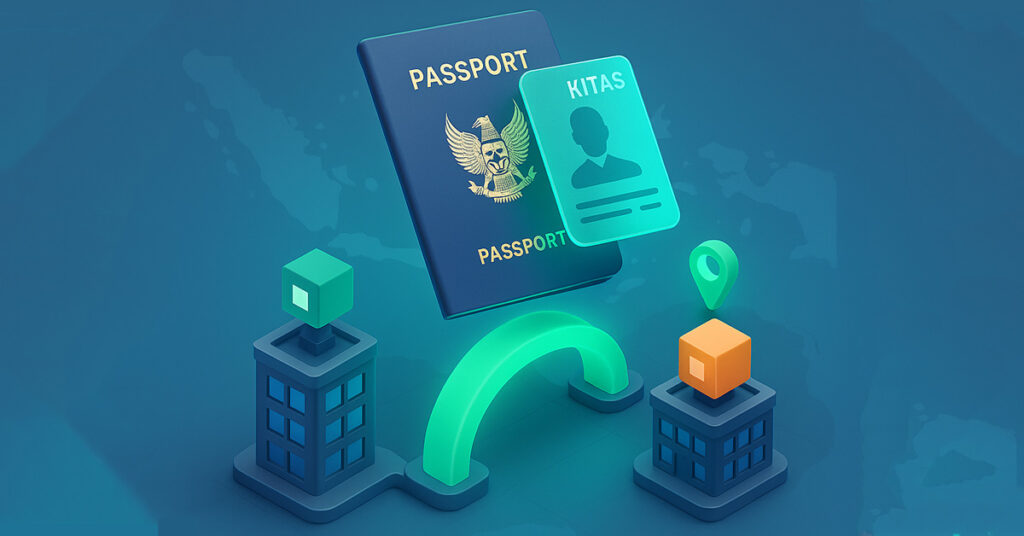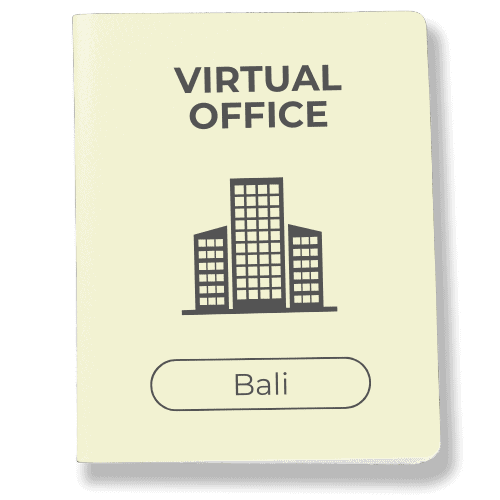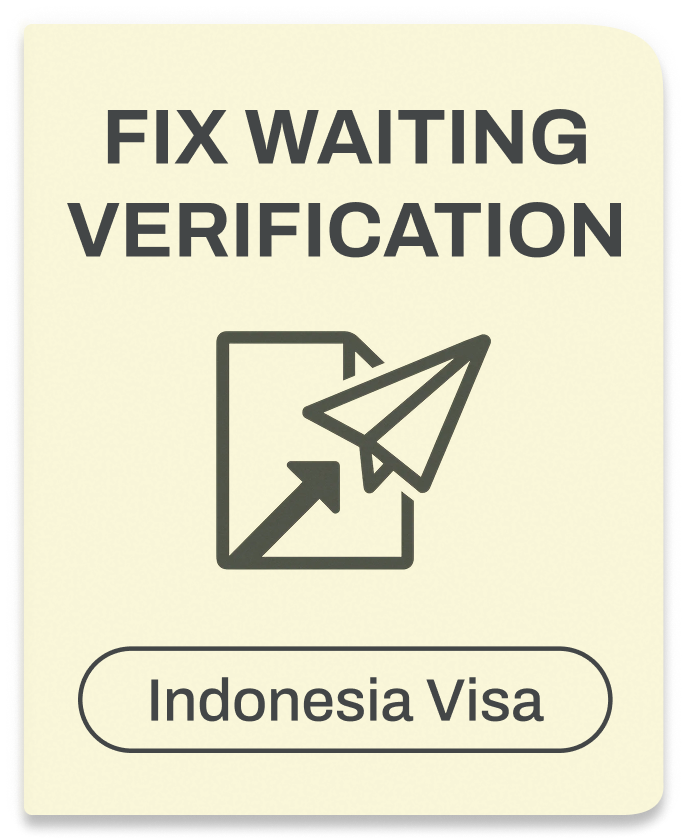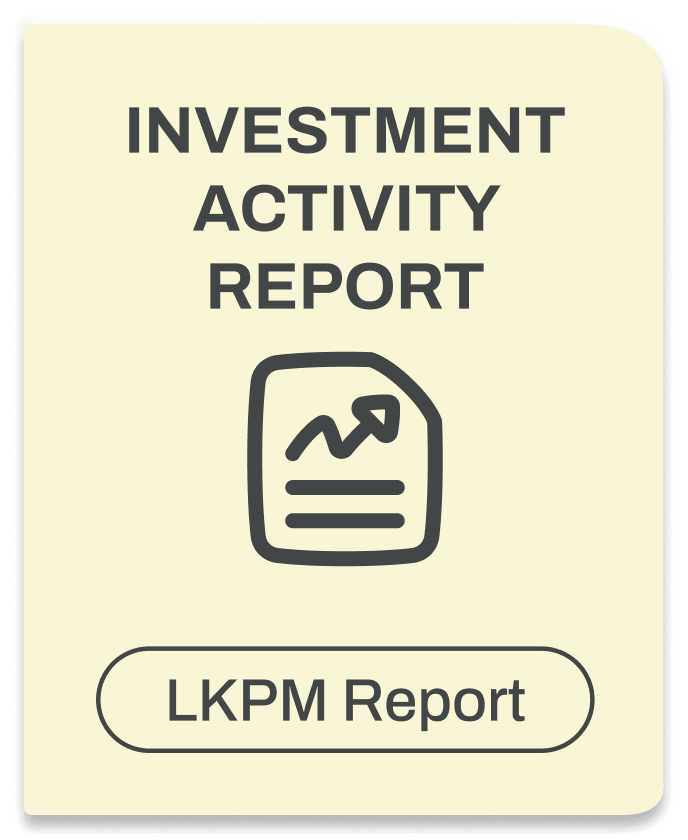Changing Sponsor or Employer on a KITAS (2025)

Need to change your KITAS sponsor or employer? You have two main options. The first is called “alih penjamin” – this lets you switch sponsors without leaving Indonesia. It works if your current KITAS is valid and your old sponsor agrees to help. This process usually takes about a week and costs less money.
The second option is getting an exit permit and applying for a brand new KITAS. You’ll need to leave Indonesia and come back with fresh paperwork. The downside is, this takes longer, around 2-4 weeks total, but it can varied. But it works even when your old sponsor won’t cooperate or your KITAS has expired.
Which path should you choose? Read our full guide below to understand exactly what documents you need and how each process works.
Process at a Glance
| Element | Path A: Alih Penjamin | Path B: EPO + Reapply |
| Who Initiates | Old sponsor releases, new sponsor applies | Old sponsor cancels, new sponsor starts fresh |
| Prerequisites | Valid e-ITAS, cooperation letter | Old sponsor can cancel + no immigration hold/ban; overstay cleared. |
| Key Documents | No-objection letter, guarantee letter | EPO application, full document package |
| Duration | 5-7 working days | 2-4 weeks total |
| Biggest Risk | Regional office rejection | Overstay during timing gaps |
| Not Allowed When | Bridging visa status | If on blacklist/hold, overstay must be settled first |
Path A: Alih Penjamin (Change Without Leaving)

Alih penjamin is essentially the transfer of sponsorship (penjamin) for a KITAS holder without requiring them to leave Indonesia. Instead of canceling your KITAS and starting a new application from abroad, you continue your stay permit under a new sponsor. For example, when you move from one company to another, your employment KITAS is transferred from your old employer to your new one.
How the Immigration System Handles Sponsor Changes
The process of sponsor change is regulated under Permenkumham No. 27 Tahun 2014 and subsequent immigration regulations. The immigration office (Kantor Imigrasi) is the authority that processes the application. Unlike a new KITAS application, the alih penjamin procedure focuses on updating your existing stay permit record with your new sponsor’s details.
Key requirements:
- Your current sponsor must provide a Surat Permohonan Alih Penjamin (application letter) and a Surat Pernyataan Tidak Keberatan (no-objection letter).
- The new sponsor submits a formal application to the local immigration office where your KITAS was issued.
- The immigration office then updates your sponsor data in their system.
What the No-Objection Letter Must Include
The no-objection letter from your current employer/sponsor is crucial. According to Hukumonline, this document must include:
- Your full name (as written in your passport)
- Your passport number
- Your KITAS/limited stay permit number
- A statement declaring that the sponsor has no objection to transferring your sponsorship
- The letter should be on company letterhead, signed, and stamped by an authorized representative (such as a director).
Required Documents
When applying for a sponsor change (alih penjamin), the following documents are generally required:
From Old Sponsor (Required Format):
- No-objection letter (company letterhead, official stamp, authorized signature)
- Employment contract termination notice
- Final employment confirmation
From New Sponsor (Required Format):
- New employment contract (signed, stamped)
- Company guarantee letter (letterhead, NIB number, stamp)
- Business license copies (legalized)
- RPTKA approval (for employment cases)
Personal Documents:
- Original passport (minimum 6 months validity)
- Current e-ITAS (digital access or printout)
- Family member documents (if applicable)
Timeline and Processing
The process typically takes 7–14 working days, depending on the workload and efficiency of the local immigration office. Hukumonline emphasizes starting the application well before your current KITAS expiry date. Delays in submission can risk overstay penalties.
Impact on Dependents (Family Members)
If you have dependents under your KITAS (spouse, children), their permits also need to be updated under the new sponsor. This is not always automatic; your new sponsor must include them in the application. Each dependent requires supporting documents, but the process is linked to the main KITAS holder’s transfer.
Path B: Exit Permit + Reapply (Leave & Return)

Sometimes, the simple sponsor transfer just won’t work for foreign workers. Maybe your old local company is being difficult, or your employment KITAS has already expired, or you need to switch to a completely different KITAS type. When that happens, you’ll need to hit the reset button – and that means you must leave Indonesia and come back with fresh documentation through the EPO process.
Think of this like moving to a new apartment when you can’t transfer your lease. You have to pack up, move out completely, and then start fresh with a new lease at your new place throughout the entire process. It’s more time-consuming, but sometimes it’s your only option to change employers legally.
Why Foreign Nationals Might Need This Route
Let’s say your old employer is being uncooperative about changing sponsor or employer on a KITAS. They might be upset you’re leaving, or they’re too busy to help with the necessary documentation, or they just don’t understand the application process. Without their cooperation, you can’t get that crucial approval letter, which means alih penjamin is off the table for KITAS holders.
Or maybe you’re switching from a working KITAS to a spouse permit because you’re legally married to an Indonesian, or vice versa. These are entirely different visa types, and the immigration office usually requires a complete restart when you change categories. The Directorate General treats different KITAS types as separate permit categories.
Another common situation: your limited stay permit expired while you were job hunting, and now you’re in what’s called “bridging status” (more on that later). During bridging, you can’t transfer your stay permit – you have to complete the current process first or start completely over with a new KITAS application.
Documents to Prepare
For EPO Application:
- Sponsor cancellation request
- Original passport
- Current e-ITAS proof
For New Application (Complete Package):
- New employment contract (signed, stamped)
- Company guarantee letter (letterhead, NIB number, stamp)
- Business license copies (legalized)
- RPTKA approval (for employment cases)
- Health certificate (if required by KITAS type)
- Educational certificates (certified translations)
- Clean criminal record (if switching categories)
- Original passport (minimum 6 months validity)
- Family member documents (if applicable)
The Step-by-Step Reality for the Entire Process
Here’s exactly what happens when you need an exit permit, and yes, it’s more time-consuming than the simple transfer:
- Old Employer Cancels Your KITAS: First, your old employer initiates KITAS cancellation through the immigration office. They’re basically telling Indonesian immigration: “This foreign national doesn’t work for us anymore, please cancel their limited stay visa.”
- Obtain Exit Permit Only: This document is critical. It sets a legal timeframe for when you must leave Indonesia. Typically, the immigration office grants between 3 and 7 days. Once the date is given, it is final. Overstaying even by one day can result in penalties, fines, or future visa complications. It’s highly recommended that you book your flight immediately after receiving this date.
- New Employer Prepares Manpower Documents: While you’re packing, your new employer back in Indonesia gets busy with the application process. They need to complete all their manpower paperwork to hire foreign workers (RPTKA approval and Notification – we’ll explain these in detail later) and then apply for your new work visa through the Indonesian consulate in whichever country you’re visiting.
- Apply for a New Work Visa at Indonesian Consulate: Enter Indonesia using this new visa application result. Once you arrive, the immigration office will process your new employment KITAS (the digital version of what used to be called a physical card). If you plan to travel frequently after this, you might also want to get a re entry permit, but that’s optional and comes after your limited stay permit is sorted.
For those who are legally married to Indonesian citizens, the process might be different if you’re switching from spouse visa to employment KITAS. Your birth certificate and marriage documents become important required documents in this scenario, and accompanying family members’ status needs to be considered throughout the application process.
Managing the Risks to Avoid Delays

The biggest risk here is timing when you change employers. You’re essentially juggling multiple moving pieces across different countries and government systems. Here’s what can go wrong and how foreign workers can prevent it:
Your new employer might be slower than expected with their paperwork to hire foreign workers. Before you leave Indonesia, make sure they’ve already started the RPTKA approval process and have all required documents. Don’t rely on promises – ask for proof that they’ve submitted everything to avoid delays in your application process.
Flight availability can be an issue, especially during peak seasons or if you’re in a smaller Indonesian city. Book refundable tickets as soon as you start this process, even before you have your exit permit. You can always change dates, but you can’t risk not having a seat when you need it.
Consider where you’ll wait while your new visa application is processed. Singapore and Malaysia are popular choices for foreign nationals because they’re close and have good Indonesian consulate services. Factor in living expenses for potentially 1-2 weeks abroad, especially if you have accompanying family members who need to leave Indonesia with you.
Scenario Matrix by KITAS Type
| KITAS Type | Allowed Paths | Manpower Notes | Family Handling | Special Pitfalls |
| Employment | A or B | RPTKA + Notification required | Follow principal | KBLI must match exactly |
| Investment | A or B | Company ownership docs | Separate applications may be needed | Investment amount verification |
| Spouse → Work | Usually B | Full RPTKA process | Status change affects children | Marriage certificate validation |
| Work → Spouse | A or B | Release from manpower obligations | Simplified for dependents | Employment contract termination |
| Digital Nomad | B preferred | Licensed sponsor entity | Limited family options | Sponsor licensing restrictions |
When Immigration Offices Disagree (And How to Handle It)
Here’s something that frustrates many foreign workers: what works at one immigration office might not work at another. Indonesia has dozens of immigration offices across the country, and while they all follow the same basic laws from the Directorate General, their interpretation and implementation can vary significantly when it comes to changing a sponsor or employer on a KITAS.
Why This Happens
Immigration officers are human beings with different levels of experience handling foreign workers and KITAS holders. Officer A in Jakarta might have processed hundreds of sponsor change cases and knows the system inside and out when foreign nationals want to change employers. Officer B in a smaller city might see these cases rarely and be more cautious about approving applications for employment KITAS transfers.
Additionally, some offices have had bad experiences in the past – maybe they approved transfers that later caused problems with foreign workers, so now they’re more strict about the entire process. Others might have received new guidance from their supervisors about limited stay permits that hasn’t reached other offices yet.
The important thing to understand is that this isn’t usually about being difficult or corrupt when handling KITAS applications – it’s often just different comfort levels with the same regulations that govern foreign nationals in Indonesia.
What documents are required When You Visit
Don’t show up empty-handed, hoping to convince the immigration office with just your charm. Come prepared withthe necessary documentation that supports your case for changing sponsor or employer on a KITAS.
Print out official Ditjen Imigrasi (Immigration Directorate General) circulars that specifically mention alih penjamin procedures for foreign workers. These are available on the official Indonesian immigration website, and having them shows you’ve done your homework about the application process. If you’ve heard of similar cases being approved at other offices for KITAS holders, bring written examples (though respect privacy and don’t include personal details of other foreign nationals).
Most importantly, bring your complete documentation package including your original passport, current employment KITAS, approval letter from your old employer, and employment contract with your new local company. Even if they initially say no to alih penjamin, having everything ready might make them reconsider when they see how well-prepared you are with all documents required.
The Right Words to Use in Indonesian Immigration Offices
Language matters in Indonesian bureaucracy, especially when foreign workers are dealing with stay permits. Using the correct official terms shows you understand the system and aren’t just winging it when you want to change employers.
Start with: “Saya ingin melakukan alih penjamin sesuai dengan prosedur Ditjen Imigrasi” (I want to perform alih penjamin according to Immigration Directorate procedures). This immediately signals that you know this is an official process for foreign nationals, not something you made up.
If they seem hesitant about your limited stay permit transfer, add: “Sponsor lama sudah memberikan surat tidak keberatan dengan cap dan tanda tangan resmi” (The old sponsor has provided a no-objection approval letter with official stamp and signature). This shows you have the key document they need to process KITAS holders’ applications.
Avoid saying things like “my friend did this” or “I read online” – stick to official procedures and documentation when discussing your employment KITAS with immigration officers.
The Escalation Process When Front Desk Says No
If the first officer you speak with says alih penjamin isn’t possible for your working KITAS, don’t give up immediately. There’s a proper way to escalate within the immigration office hierarchy when you want to change employers.
Politely ask to speak with the “Kasubsi Statuskim” – that’s the Subsection Head for Status and Immigration matters. This person typically has more experience with complex cases involving foreign workers and authority to make decisions about limited stay permits that the front desk officer can’t.
If the Kasubsi also says no to your sponsor change request, you can request to speak with the “Kabid Imigrasi” – the Immigration Section Head. This is getting to senior management level, so only do this if you’re confident your case meets all requirements for changing sponsor or employer on a KITAS.
At each level, remain polite and professional with immigration office staff. Explain that you’ve prepared all required documents according to official procedures for foreign nationals and would appreciate their guidance on your employment KITAS transfer. Indonesian bureaucratic culture respects patience and proper protocol.
What to Do When All Immigration Office Options Fail
Sometimes, despite your best efforts, a particular immigration office simply won’t approve alih penjamin for your case as a foreign worker. This doesn’t mean you’ve done anything wrong – it might just be that office’s policy regarding foreign nationals who want to change employers.
Document exactly why they refused your limited stay permit transfer. Ask for a written explanation if possible, or at least take detailed notes about their specific concerns regarding your employment KITAS. This information will be valuable if you decide to try at a different immigration office or need to pursue the exit permit route instead.
Consider whether you have time to visit a different immigration office. If you’re in Jakarta, you might try a different district office that handles foreign workers. If you’re near a provincial border, sometimes the neighboring province’s office has different practices for KITAS holders who want to change sponsors.
Ultimately, remember that the EPO process (leaving and reapplying) works regardless of office policies. It’s more time consuming and expensive, but it’s your guaranteed backup plan to change employers. Many foreign nationals successfully use this route when the transfer option doesn’t work out, and you’ll still obtain your new employment KITAS through the proper application process. with the “Kasubsi Statuskim” – that’s the Subsection Head for Status and Immigration matters. This person typically has more experience with complex cases and authority to make decisions the front desk officer can’t.
If the Kasubsi also says no, you can request to speak with the “Kabid Imigrasi” – the Immigration Section Head. This is getting to senior management level, so only do this if you’re confident your case meets all requirements.
At each level, remain polite and professional. Explain that you’ve prepared all required documents according to official procedures and would appreciate their guidance. Indonesian bureaucratic culture respects patience and proper protocol.
After-Care Obligations Checklist

Immediate Updates Required (Within 30 Days)
- [ ] SKTT address registration at local RT/RW if relocating
- [ ] DUKCAPIL data updates (civil registration office)
- [ ] Bank account notifications of sponsor change
- [ ] NPWP tax updates with new employer information
- [ ] HR/payroll system updates at new company
Immigration Compliance
- [ ] MERP validity check – may need renewal with new sponsor
- [ ] Next extension calendar – mark 30 days before e-ITAS expiry
- [ ] Address reporting if moving to a different province
- [ ] Family dependent updates ensure all are linked properly
Employment Compliance
- [ ] Work location registration with new employer
- [ ] Social security transfers (BPJS Ketenagakerjaan/Kesehatan)
- [ ] Tax withholding updates aligned with the new employment contract
- [ ] Performance evaluation schedule under new management
Risk Controls & Timeline Management
Critical Timing Windows
- 30 days before e-ITAS expiry: Latest to start alih penjamin process
- 14 days before expiry: Fallback to EPO if Path A stalls
- 7 days before expiry: Emergency EPO processing only
- Day of expiry: Overstay penalties begin (Rp 1,000,000/day)
Risk Mitigation Strategies
- Dual-path preparation: Ready both alih penjamin and EPO documents
- Communication protocols: Daily updates between sponsors during the process
- Backup flight bookings: For EPO scenarios (refundable tickets)
- Document redundancy: Multiple copies of all critical papers
Emergency Procedures
- Unexpected delays: Contact the immigration office supervisor immediately
- Sponsor non-cooperation: Switch to the EPO path within 48 hours
- System technical issues: Request manual processing with documentation
- Family separation risk: Process all dependents simultaneously
Ready to Apply or Extend Your Visa?
Let our visa specialists handle your application.



















